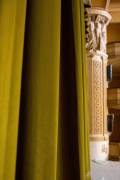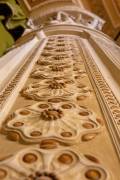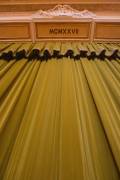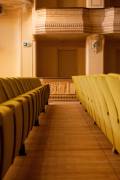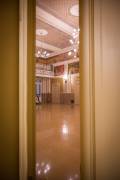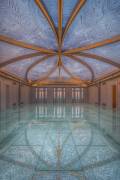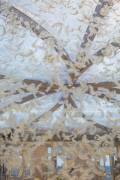The Kursaal Santalucia has never been only a theatre. The magnificent Art Nouveau building, located on the seafront, in a focal point of the cultural and nightlife area of the city of Bari, has always been a hub for all kinds of events: festivals, exhibitions, plays, concerts, social happenings, ceremonies, etc. The conservative restoration works […]
[...]Read MoreThe Kursaal Santalucia has never been only a theatre. The magnificent Art Nouveau building, located on the seafront, in a focal point of the cultural and nightlife area of the city of Bari, has always been a hub for all kinds of events: festivals, exhibitions, plays, concerts, social happenings, ceremonies, etc.
The conservative restoration works carried out aim at bringing it back to its former glory, after years of closure. The site has operated during the height of the Covid-19 pandemic: however, by overcoming great difficulties, it was adapted to the new procedures and the work’s completion has brought the thrill of the rebirth of the city’s symbols to the people of Bari.
As for the restoration works, the operations carried out on the façade are of paramount relevance: the cement-bound stone surfaces have been brought back to light with their original appearance, as well as the sculptural groups and the mouldings. Important studies have also been completed on the chromatic study of the façade, balancing the colour tone of the neighbouring buildings that underwent different chromatic treatments.
Important works have also been completed inside the theatre hall, especially on the frescoes made by the Prayer brothers; all the historical chandeliers, the decorated metal components, the wooden fixtures and the historical floors have been restored. It is vital to focus on repairs, especially since the proximity to the sea and the presence of a surface aquifer subjected the theatre to rising damp phenomena: they were solved through the creation of aerated crawl spaces and ventilation chimneys inside the walls.
Interventions of structural consolidation and seismic improvement have been carried out in order to preserve the protected structure. The issue of renewable energy sources for the theatre was also addressed: in most cases, their aesthetic impact is significant, especially on a protected building such as this. A solution was devised, by creating a closed-circuit geothermal system below the flooring, fitted with four probes that reach a depth of 250 m and constantly exchange heat with the subsoil. This solution allows for a significant decrease in energy consumption; it is also invisible and quiet, so as not to interfere with surrounding architecture. Technological innovations have also made it possible to achieve a flexibility of space, especially in the theatre: today, it would be more appropriate to define it a multifunctional room, especially because of the installed technical apparatus fitted with a large array of systems.
The hall is currently equipped with 380 seats, as it also serves as a cinema; however, the real multifunctionality is represented by the stalls that can change configuration in a matter of minutes: an electromechanical movement system allows for the overturning of all the seats and the raising of the floor up to the stage level, thus creating a single seamless environment, without any obstacles. The room can therefore perform multiple functions.
On the upper level, the Sala Giuseppina features the restored frescoes of the Turin-born brothers Mario and Guido Prayer; the original flooring has been removed in order to carry out the structural consolidation of the ceiling; the floor has then been replaced by a two-tone sown-in Venetian-style floor. During the restoration, the colour tones of the walls were also reworked, bringing them back to their original chrome tone thanks to the insertion of gold-colored stretched fabrics: these fabrics have an acoustic function to them, as they lend themselves to achieve proper hosting of events and conferences. The roof garden is located on the upper floor: a former open terrace, which was heavily neglected and made of poor quality materials.
The Apulia regional administration has therefore chosen to entrust the restoration of this floor to artist Alfredo Pirri, who has transformed the roof garden into the Sala Cielo, a work of art that can in turn become a hub for other exhibitions. The area is characterized by a floor made of shattered mirrors slabs and by a semi-transparent cover on which the artist’s watercolours masterpieces are printed; the walls feature closed windows made of blue opal glass, on which it is possible to see white feathers floating between two glass panes.
The aim was to bring new life to this environment: through the glass surfaces, it is possible to capture the colour nuances of the sky during the various moments of the day.
The terraces adjacent to the Sala Cielo, from which it is possible to enjoy a unique view of Bari’s seafront, have also been restored for public access.
Read Less




































































